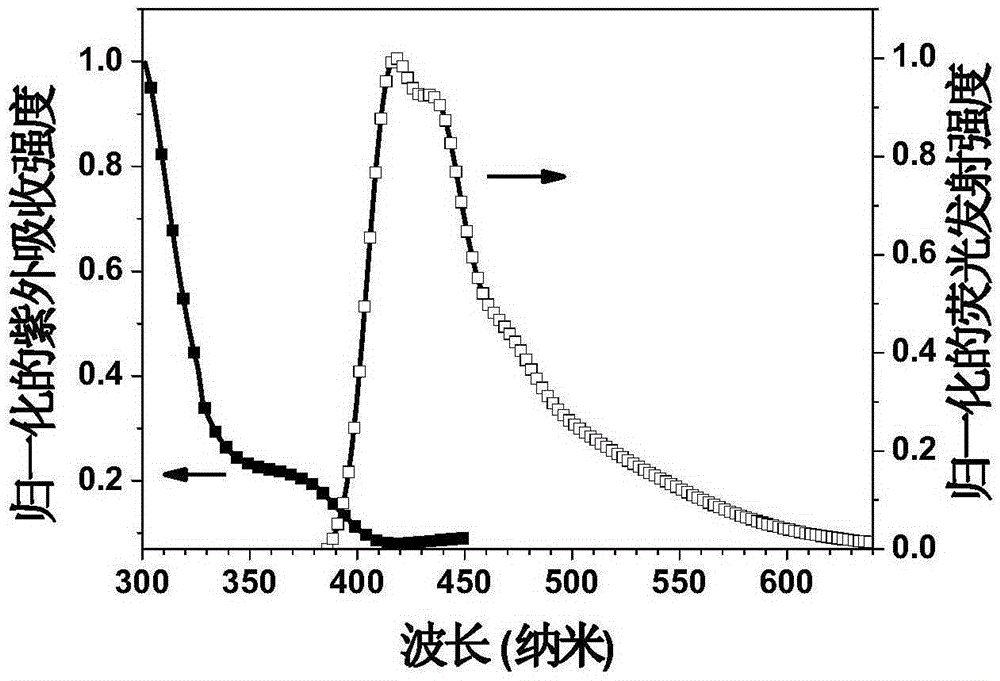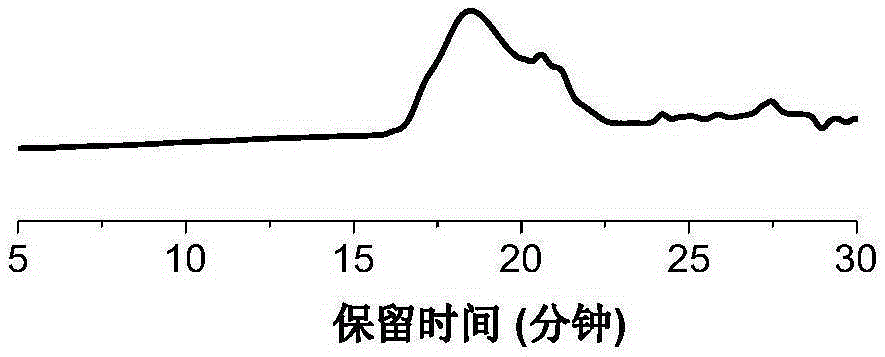Nanometer grid, nanometer polymer grid material and their preparation method and use method
A nano-polymer and nano-lattice technology, applied in chemical instruments and methods, luminescent materials, semiconductor/solid-state device manufacturing, etc., can solve the problems of poor material stability, structural uncertainty, complex preparation process, etc., and achieve low cost, Simple operation and good solubility
- Summary
- Abstract
- Description
- Claims
- Application Information
AI Technical Summary
Problems solved by technology
Method used
Image
Examples
preparation example Construction
[0070] The key step of the preparation method of the nano-lattice of the present invention is that the tertiary alcohol undergoes an acid-catalyzed Friedel-Crafts reaction, and the nano-lattice is obtained by self-ring closure. Taking nanolattice I as an example, the specific reaction is as follows:
[0071]
[0072] This type of material is obtained by polymerization of nano-lattice through Suzuki coupling polymerization, Stille coupling polymerization or Yamamoto coupling. Taking nano-polymer lattice material II as an example, the details are as follows:
[0073]
Embodiment 1
[0077] Embodiment 1, 2,7-dibromo-9-(4-octyloxyphenyl)-fluorene-9-alcohol (10g, 18.37mmol) and N-octylcarbazole (51.33g, 183.70mmol) were dissolved in 1000mL anhydrous CH 2 Cl 2 , was added dropwise in 100 mL of anhydrous CH with rapid stirring 2 Cl 2 boron trifluoride ether solution (7.80g). Stir at room temperature for 24 hours. After the reaction is complete, add 100 mL of water to quench the reaction and use CH 2 Cl 2 The organic layer was extracted, combined, dried with anhydrous magnesium sulfate, concentrated by rotary evaporation to remove the solvent, separated and purified by column chromatography to obtain a white solid powder (14.10 g, 97%) MALDI-TOF-MS (m / z): 805.2 / 805.2[M+], 1 H-NMR (400MHz, CDCl 3 )δ7.96(d, J=8Hz, 1H), 7.84(s, 1H), 7.61(d, J=8.4Hz, 2H), 7.55(d, J=1.6Hz, 2H), 7.48(m, 2H ),7.43(m,1H),7.37(d,J=8Hz,1H),7.27(m,1H),7.17(m,4H),δ6.80(m,2H),4.24(t,J 1 =7.2Hz,J 2 =7.2Hz,2H),3.93(t,J 1 =6.8Hz,J 2 = 6.4Hz, 2H).
Embodiment 2
[0078] Implementation Example 2, 11.80g (14.64mmol) 3-(2,7-dibromo-9-(4-octyloxyphenyl)-fluorenyl)-9-octylcarbazole and 2.50g (4.88mmol) 2-Boronic acid pinacol ester-9-(4-octyloxyphenyl)-fluorene-9-ol and 340 mg (029 mmol) tetrakistriphenylphosphine palladium were added to the reaction bottle, coated with vaseline, and sealed with a sealing tape. Evacuate the nitrogen three times. Add the bubbled toluene and tetrahydrofuran mixed solution with a syringe, inject the bubbled 2molL after 15min -1 Potassium carbonate solution 20mL, react at 85°C for 48h, add 100mL water to quench the reaction, use CH 2 Cl 2 The organic layer was extracted, combined, dried over anhydrous magnesium sulfate, concentrated by rotary evaporation to remove the solvent, separated and purified by column chromatography to obtain a yellow solid (5.0 g, 92%). MALDI-TOF-MS (m / z): 1109.1 / 1109.5 [M+], 1 HNMR (400MHz, CDCl 3 )δ7.91-7.97(m,2H),7.77(d,J=8Hz,1H),7.63-7.66(m,4H),7.55-7.58(m,2H),7.47-7.53(m,3H), ...
PUM
| Property | Measurement | Unit |
|---|---|---|
| Thickness | aaaaa | aaaaa |
Abstract
Description
Claims
Application Information
 Login to View More
Login to View More - R&D
- Intellectual Property
- Life Sciences
- Materials
- Tech Scout
- Unparalleled Data Quality
- Higher Quality Content
- 60% Fewer Hallucinations
Browse by: Latest US Patents, China's latest patents, Technical Efficacy Thesaurus, Application Domain, Technology Topic, Popular Technical Reports.
© 2025 PatSnap. All rights reserved.Legal|Privacy policy|Modern Slavery Act Transparency Statement|Sitemap|About US| Contact US: help@patsnap.com



